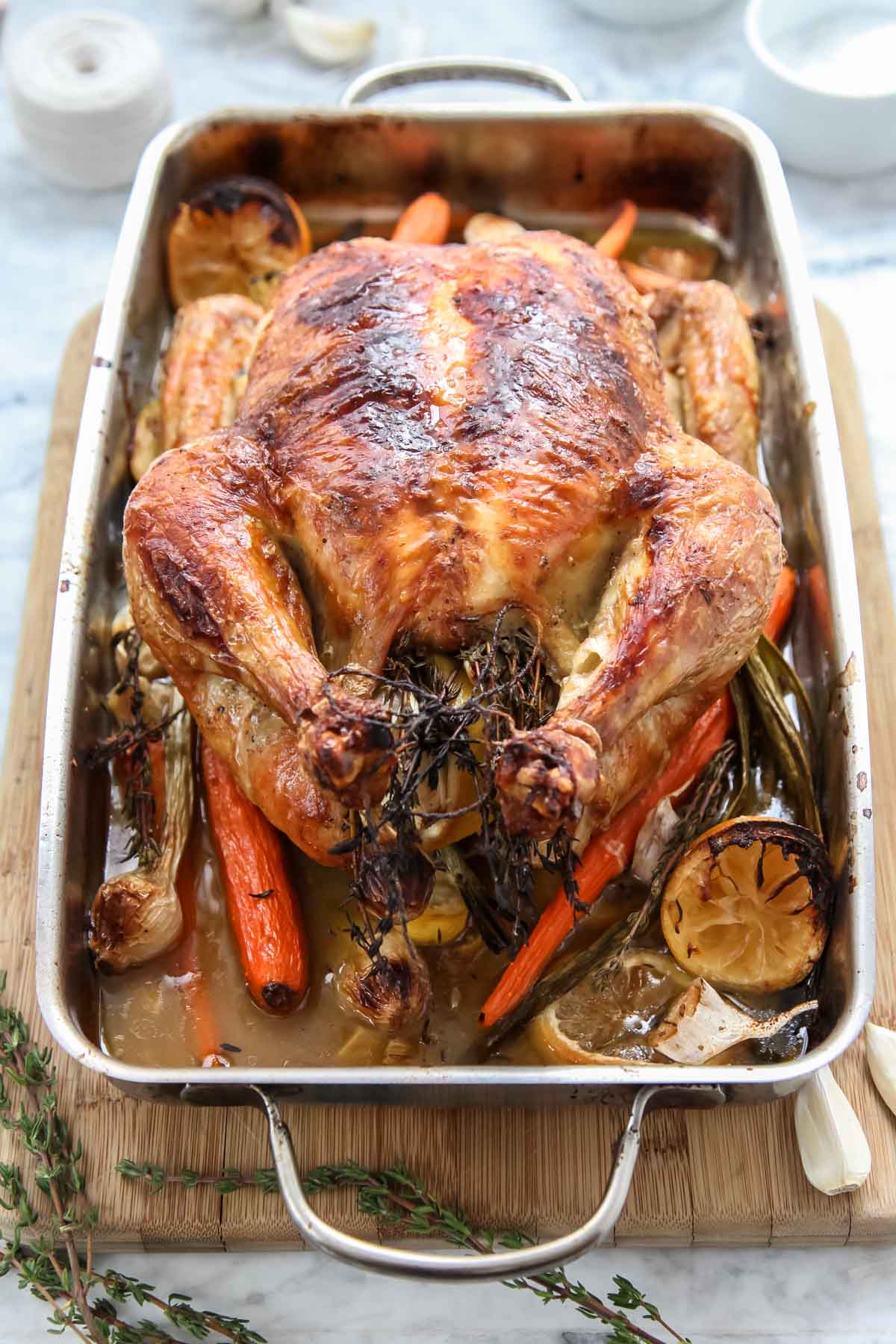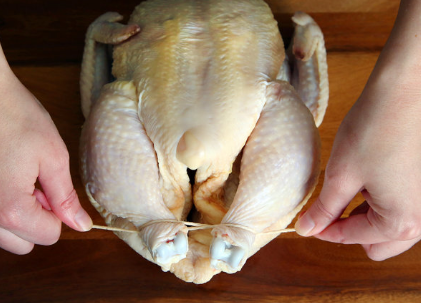Preparing the Chicken
There is no consensus on the best way to prep a chicken for roasting; it’s all a matter of personal preference and tried-and-true experience. But here are some suggestions for where to start. Try each and then pick your go-to method. And note that there’s nothing wrong with leaving the bird as is, salting it and just putting it in the oven.
-
SPATCHCOCKING

Jensen Beach Chef
To spatchcock a chicken, take a pair of kitchen shears or a very sharp knife and cut along one side of the chicken’s backbone. Open up the bird so it lies flat. Cut along the other side of the backbone to remove it entirely. Then cook the chicken breast-side up.The only disadvantage to this method is that you’ll lose the classic Norman Rockwell presentation of the whole bird. But the speediness and great flavor make up for it.A tip: Don’t toss that backbone! A roasted backbone will add more flavor to stock than using a raw backbone. Roast it alongside the chicken, and either serve with the bird (delicious to gnaw on), or save for stock. (You could also just leave the backbone attached, rather than removing it from the bird altogether. Cut along the backbone on only one side of the bird, then open the chicken and roast as is. This doesn’t affect cooking time and saves you some knife work.) -
Spatchcocking, also known as butterflying, is an extremely simple move that delivers a gorgeously cooked chicken with crisp skin, and it does so quickly — usually in less than 45 minutes.
-
SPLAYING
Splaying yields a chicken with succulent white meat and perfectly roasted dark meat. The thighs, usually the slowest part of the bird to cook through, get a head start by being positioned directly on the burning hot pan. And the technique is quicker and easier than spatchcocking.To splay the chicken, use a sharp knife to cut the skin along the thigh on each side, where the legs connect to the body. Then splay the thighs open until you feel the joint pop on each side. Spread out the thighs out so they can lie flat in a preheated skillet. -
TRUSSING
Some people like the nice, compact shape of a trussed chicken, and argue that it helps keep the white meat moist. If you want to try it, the classic method is demonstrated in the video above.For a shortcut trussing method, simply tie the chicken’s legs together at the ankles with one piece of twine, and then use another piece of twine to tie the wings to the breast.If you’re planning to stuff your chicken, you may want to truss it in the traditional style. Or you can get away with just tying the legs together to keep the stuffing mix from falling out. -
Seasoning and Aromatics
Seasoning the chicken ahead of time is a good idea, so that the flavors penetrate the flesh all the way to the bone. This is true whether you’re rubbing the bird with salt, spices and aromatics — a dry brine — or using a more traditional wet brine. Then add other flavors if you like, stuffing the cavity with aromatics (like lemon or herbs) or rubbing the skin with fat (like oil or butter), or both. - Courtesy of: https://cooking.nytimes.com/guides/11-how-to-roast-chicken.





0 Comments